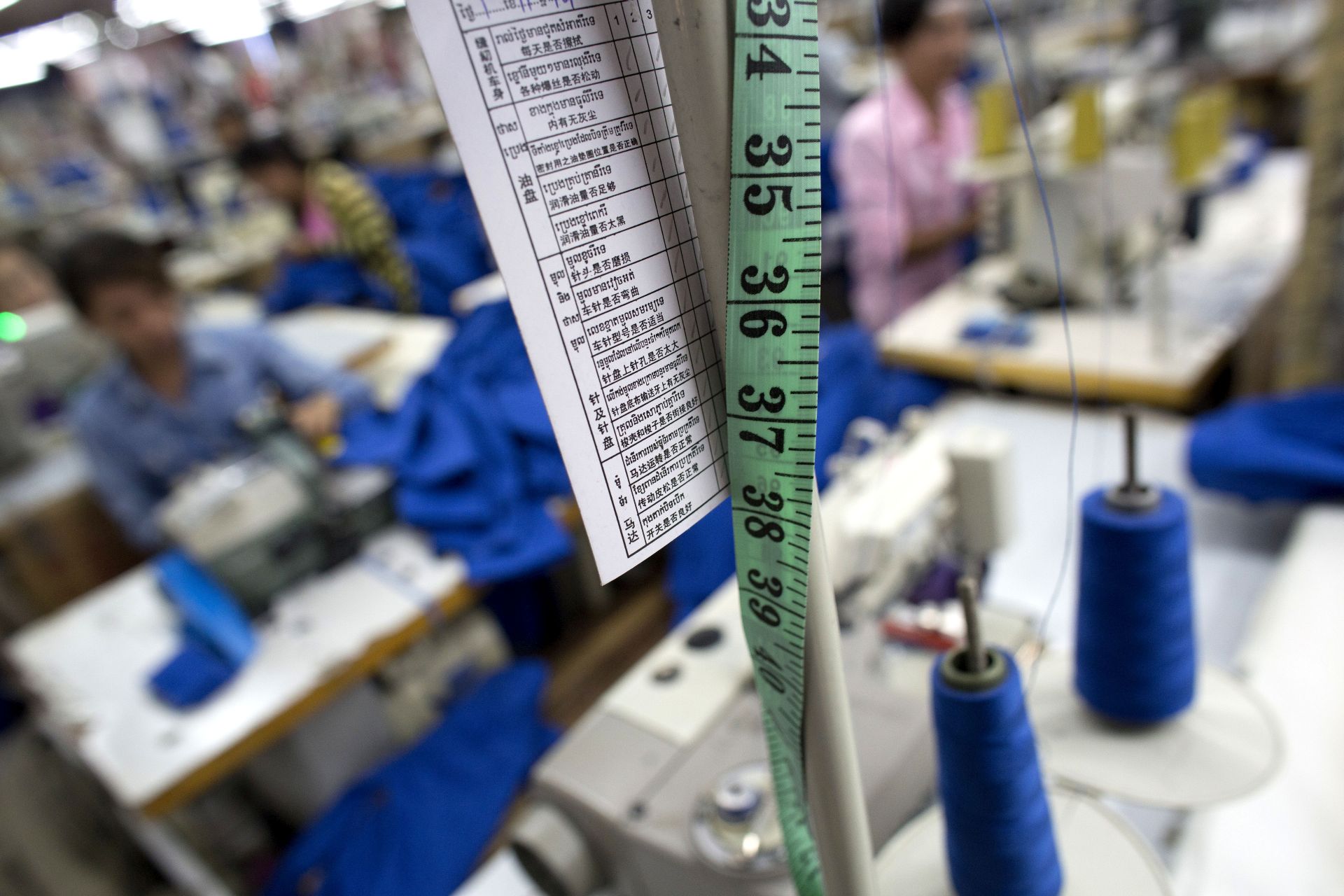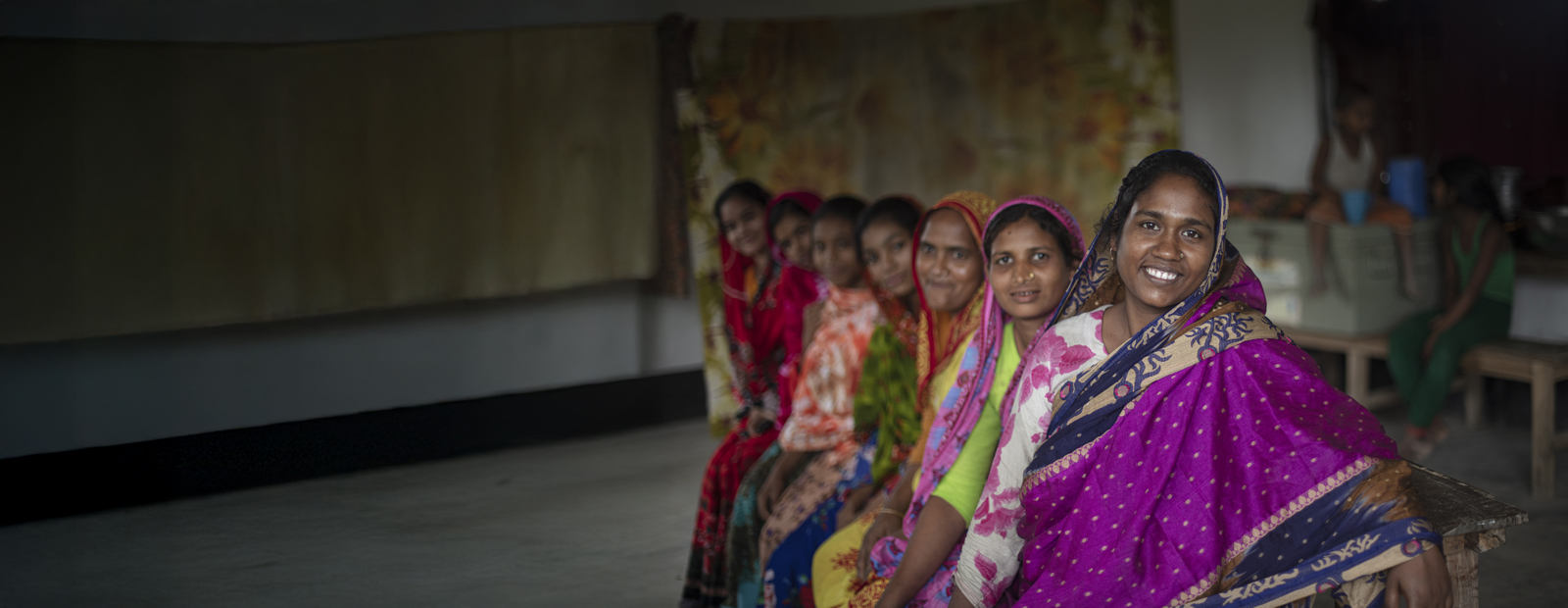Sexual Harassment
Sexual harassment is a type of violence against women and girls that is defined as any unwanted or uninvited behavior of a sexual nature that can make a person feel humiliated, intimidated or offended. Harassment, threats and verbal abuse exist on a continuum of sexual violence, and are based upon deep-rooted social norms and practices that devalue women, their contribution and skills. It can occur in the workplace or community, and it is a violation of human rights. International evidence shows that certain factors drive higher levels of violence against women. “These include beliefs and behaviours marked by disrespect for women, low support for equal rights, and adherence to rigid or stereotypical roles, relationships, and identities based on sex.”[1] Women—who comprise 70-90 per cent of the garment sector’s workforce—are most often the target of sexual harassment, in the workplace and in their community.
The Garment Industry in Cambodia
Of the 600,000 workers employed by Cambodia’s garment sector, 85 per cent are women. Women are central to Cambodia’s rapid economic growth, primarily through their employment in the garment industry. Since the mid-1990s the total annual output of the garment sector has grown from an estimated USD 20 million to over USD 5 billion today, almost a third of the national GDP. This growth has been fuelled in part by Cambodia’s competitive advantage for ethical working standards.
In an industry whose success relies heavily on migrant women’s labour, sexual harassment is therefore not only a human rights issue but also an economic issue, with appropriate investment required to create a safe, respectful and competitive work environment for all its employees.
New Research in the Prevalence and Cost of Sexual Harassment
CARE’s regional initiative, Enhancing Marginalised Urban Women’s Rights and Equality (EMERE), is a four-year regional initiative supported by the Australian Government and the Australian public. EMERE is designed to scale up and multiply the impact of the Socially Marginalised Women’s Portfolios for CARE country offices in Cambodia, Lao, Myanmar and Vietnam, by adding value to and enhance country programs related to three thematic areas: access to dignified work, protection and action to prevent violence against women and girls, and meaningful participation
Under EMERGE CARE Australia commissioned an industry-wide study, to examine the prevalence and productivity cost of sexual harassment of workers to the Cambodian garment industry, entitled, ‘I know I cannot quit.’ The Prevalence and Productivity Cost of Sexual Harassment to the Cambodian Garment Industry. The study was conducted by CARE in cooperation with the Garment Manufacturers Association of Cambodia (GMAC) and funded through the Australian NGO Cooperation Program (ANCP) from the Australian Department of Foreign Affairs and Trade (DFAT) and the Australian public.
The quantitative survey collected data on 1,287[2] workers (1085 women and 198 men) across 52 factories, with 25 qualitative interviews and 9 focus groups conducted in a variety of different living and working environments. The design and implementation of the study was developed to comply with World Health Organisation ethical guidelines for researching violence against women (Ellsberg and Heise, 2005). The safety of respondents and the research team was paramount and informed all decisions throughout the study.
To determine productivity costs, the researchers examined the indirect costs of lower productivity, revenue loss, and missed days of work based on both worker and factory perspectives. The estimated cost aims to contribute to the garment industry’s in-depth understanding of the relationship between violence against women, sexual harassment and the cost of productivity to the sector.
KEY FINDINGS
- The productivity cost of sexual harassment in the garment industry is estimated at USD 89 million per annum.
- Sexual harassment is a regular occurrence – nearly one in three women garment factory workers report experiencing sexually harassing behaviours in the workplace over the last 12-months.
- One in four men surveyed (50 of the 198 men) reported being asked questions of a sexual nature in the workplace.
KEY RECOMMENDATIONS
CARE’s overall recommendations are threefold:
- Improve productivity, prevention and protections through industry and Government jointly promoting harassment-free work and community environments.
- Work towards better legal protections against sexual harassment.
- Invest and support programs, laws and policies that continue to build the reputation of Cambodia as a country committed to equality for women, appropriate labour standards and freedom from fear of violence.
The results demonstrate not only that sexual harassment remains a serious issue for women workers in the Cambodian garment industry, but that it is associated with considerable costs to the factories themselves.
To view these reports, see below:
This technical report provides a detailed examination of the prevalence and cost of sexual harassment in the Cambodian garment industry.
The Research Summary provides a quick overview of the costing study and discusses the key findings.
Women in Cambodia’s Garment Industry
This brief provides a quick overview of women in the garment industry in Cambodia based on data collected from the study ‘I know I cannot quit.’ The Prevalence and Productivity Cost of Sexual Harassment to the Cambodian Garment Industry.
Read EMERGE’s blog post on the study.
Find out more about CARE’s work in Cambodia.
[1] Our Watch, Australia’s National Research Organisation for Women’s Safety (ANROWS) and VicHealth (2015). Change the story: A shared framework for the primary prevention of violence against women and their children in Australia. Melbourne: Our Watch.
[2] In some of the descriptive tables n numbers differ from full 1287 sample. This is due to small amounts of missing data where respondents were unable or unwilling to answer questions.

